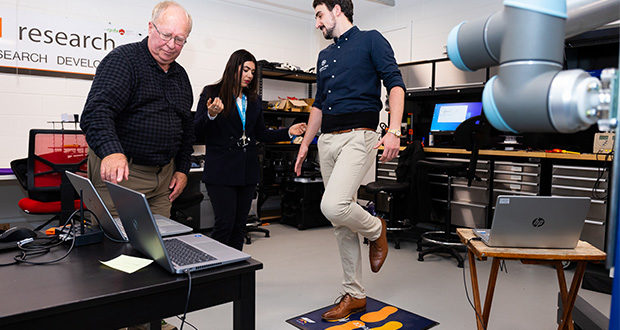Scientists have pioneered the 'Balance Mat' in an effort to reduce high numbers of lethal falls in aged care.
Falls by older people are more likely to result in hospitalisations or severe injury, where data found that 94 per cent of fall-related deaths were of people aged over 65.
Staff in residential aged care homes have been eager to reduce those numbers yet are faced with significant challenges due to the complex nature of falls.
Canberra-based researchers from the Human-Centred Technology (HCT) Research Centre and Robotics joined forces with Aussie start-up 'Balance Mat' to design a tool that accurately estimates someone's risk of falling over time.
Dr Maryam Ghahramani, a lecturer and HCT Research Centre member, told Aged Care Insite that current measuring tools are rudimentary.
"Gauging someone's postural sway – and therefore how at risk they are of having a fall – is usually done visually by doctors," she said.
"This is very subjective, and therefore not a good measure – it isn't precise and can't be used to tell if someone's balance is deteriorating or improving over time."
Currently, classic questionnaire-format tools such as the STRATIFY scale are the go-to tool for clinicians as few digital tests exist.
If a medical practitioner does decide to use computerised devices, like the Force Plate, costs can rise as high as $30,000, Maryam added.
Those devices often rely on precisely-places sensors and are prone to be disrupted by 'noise' such as a participant's breathing.
"The Balance Mat is the first technology I've seen that addresses these limitations, being small, light and therefore portable and just a fraction of the price of the others," she said.
While predicting fall risk is complex due to multiple factors, such as medication use and environmental hazards, research has linked postural sway as an effective indicator.
Maryam said that although humans naturally sway, it increases as we age.
"You might be standing and not realise you're swaying, but if you close your eyes, you'll start to feel a bit wobbly," Maryam explained.
"Postural sway also worsens when moving or in different positions.
"So it's very important that when you're assessing the risk of falls we look at the postural balance of older people in different standing positions."
Reduced eyesight and sleepiness are other reasons why older people tend to fall more frequently during nighttime.
"Older people don't have good vision at night because the brain does not have that visual feedback and cannot correct its balance and posture," Maryam said.
"Sometimes, it becomes so bad that the person is at immediate risk of falling."
While aged care homes can undertake measures to ensure areas are safer at night, Maryam said keeping track of a resident's balance over time can prevent falls in the future.
"Geriatricians will be better able to measure a person's balance based on what is happening to their postural balance using the Balance Mat," she said.
"They can repeat the test weekly or monthly and the data will be stored in the cloud platform.
"If it worsens, they can devise some interventions and exercises."
The Balance Mat's next phase is preparing it for the market and expanding its usability for future use.
Do you have an idea for a story?Email [email protected]
 Aged Care Insite Australia's number one aged care news source
Aged Care Insite Australia's number one aged care news source

